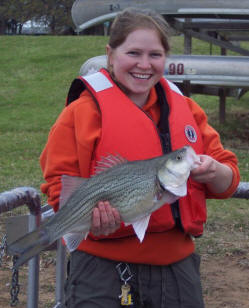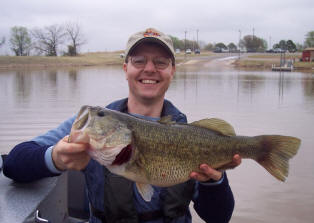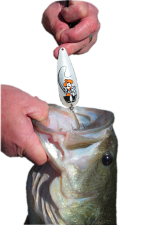The effect of age-0 gizzard shad abundance on piscivore abundance and condition
Project personnel: Nathan Copeland, Dan Shoup, Kevin Boswell

Gizzard shad (Dorosoma cepedianum) are the main prey in many Midwest and Southern U.S. reservoirs. Despite their high biomass in many systems, the majority is unavailable to piscivores because gizzard shad rapidly grow beyond the gape size of most predators and predators typically only eat gizzard shad <100mm total length (or ≤ 200 mm TL for larger piscivores) even when larger prey within their gape size are abundant. Therefore, most piscivores consume only age-0 gizzard shad.
Ecological theory suggests that potential competitors may minimize competition by temporally or spatially partitioning resources. However, this is unlikely to occur with shad-eating piscivores. While many reservoir piscivores are spatial separated by habitat, gizzard shad populations roam throughout reservoirs and are commonly found in littoral habitat and pelagic habitat. Therefore, the spatial separation of piscivores fails to partition the prey resource unless predators in some habitat choose to eat prey other than gizzard shad. Similarly, different predators may consume age-0 gizzard shad year class at different times due to different prey size preferences. However, gizzard shad typically only spawn in the spring (or occasionally a second time in early summer), and no resource renewal occurs between the times the smaller and larger predators use the resource. Resources consumed by the smaller predators exacerbate resource limitation for the larger predators; therefore, it is unlikely that niche partitioning alleviates competition for gizzard shad unless predators switch to alternative prey species as a part of the partitioning process .

This study study is investigating the relationship between the abundance of gizzard shad and the abundance and condition of piscivores in southern reservoir habitats. Using a combination of field data collection and state agency data sets, modeling is being conducted to determine if relationships between these metrics exist. Ultimately, if relationships are found, we hope to develop indexes to help guide fisheries managers in assessing potential for prey limitation and to guide stocking of put-grow-and-take piscivore fisheries.


